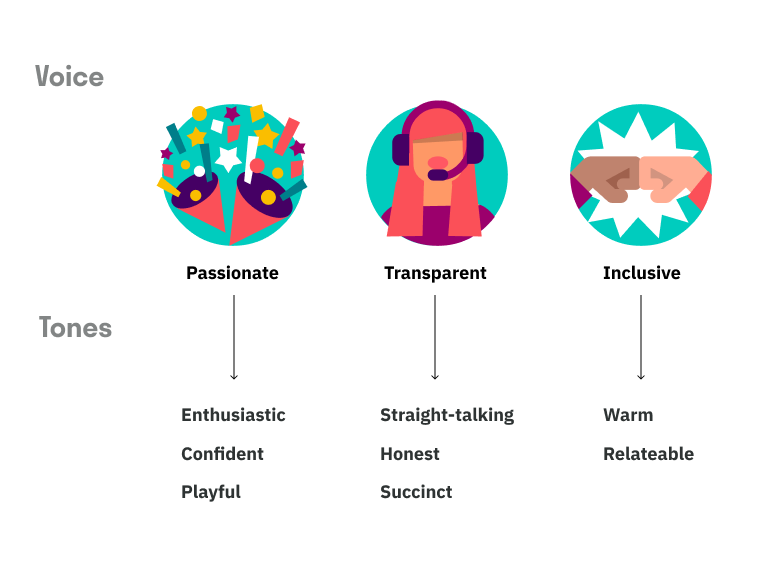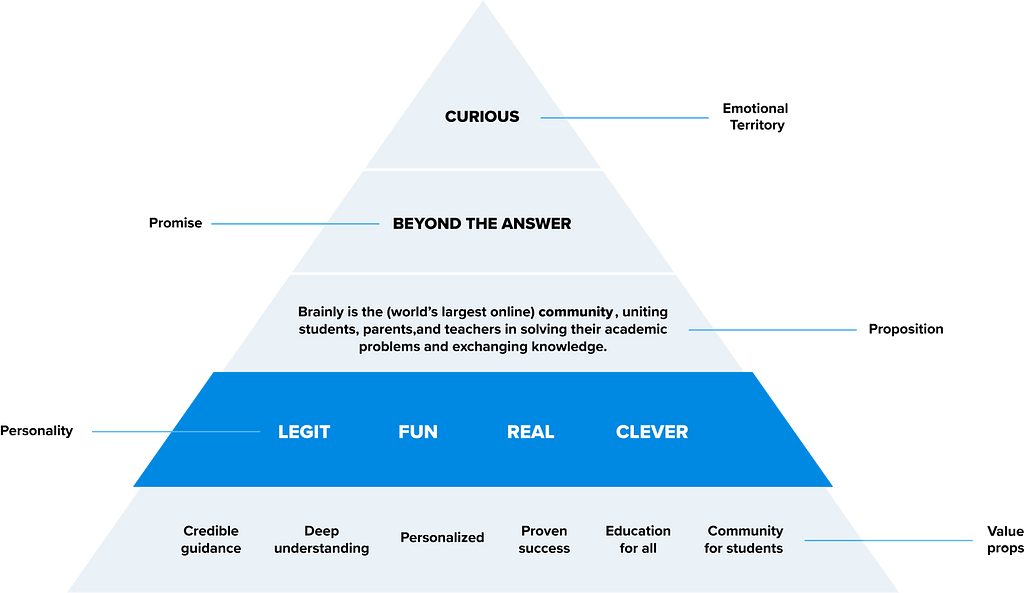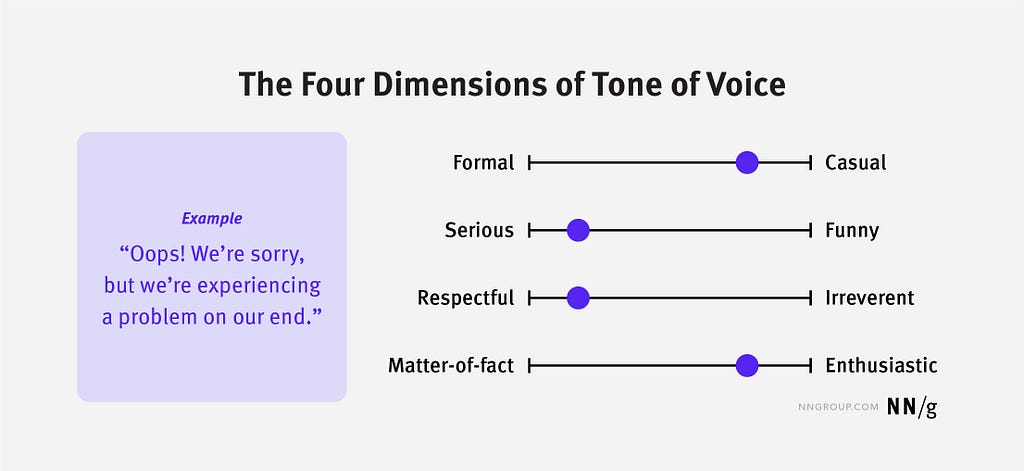
Choosing the tone of voice for a digital product’s copy is crucial to creating a consistent and engaging user experience. Product teams come in all shapes and forms, but they often don’t have a dedicated UX writer. As a result, writing the UI texts might happen on the fly, and the final result does not always support users best.
Our product is an extension of our brand. We use visual design to shape how our brand looks like, and voice & tone to shape how it sounds.
Voice
Voice is the consistent language that makes an experience distinct from others. It expresses the brand’s personality and values. Voice is something that helps people understand and relate to a brand.
Voice doesn’t change. It’s brand’s personality and how it sounds, regardless of the situation.

To find the right voice, you need to invest in researching your target audience and figuring out how they perceive your brand.
- Listen to real users. What words do they use? Good places to look for user conversations are online forums, social media sites, product reviews, or the comments section in the AppStore.
- Write down key personality traits your product had if it was a real person. They should match your users’ expectations.
- Write down adjectives the product will NOT embody. This will help you eliminate doubt when writing.

Tone
Tone refers to the emotional inflection applied to the voice, and it can vary depending on the context and situation. While the voice remains consistent, the tone adapts to the user’s needs, emotions, and the specific scenario.
Tone modifies the voice to be appropriate for the situation. This usually means using different words, punctuation, or syntax.
For example, you can go with an instructional tone for the error copy and choose the celebratory tone when the user has succeeded at their task.
- When users face error states, they aren’t looking for humor or chumminess. Instead, they want straightforward information about how to fix the problem.
- But when users accomplish something with your product, they will probably feel happy, and a celebratory tone will work well.

When choosing a tone, consider who is speaking, and to whom.

UX writing validation checklist
- Focus on our users’ needs, priorities, and goals;
- Convey your personality;
- Use simple words. Avoid jargon, slang, idioms, acronyms, and technical language;
- Use active voice instead of passive voice;
- Write in sentence case;
- Be concise and consistent;
- Read it out loud before using in UI design.
Want to master your UX design skills?
Whether you’ve been working as a designer for years or are completely new to design, Designlab has programs and courses to help you take the next step in your design career (even if that’s your first step).
Online UI and UX Design Courses and Bootcamps | Designlab
This post contains affiliate link(s)
Voice and Tone in Product Design was originally published in UX Planet on Medium, where people are continuing the conversation by highlighting and responding to this story.